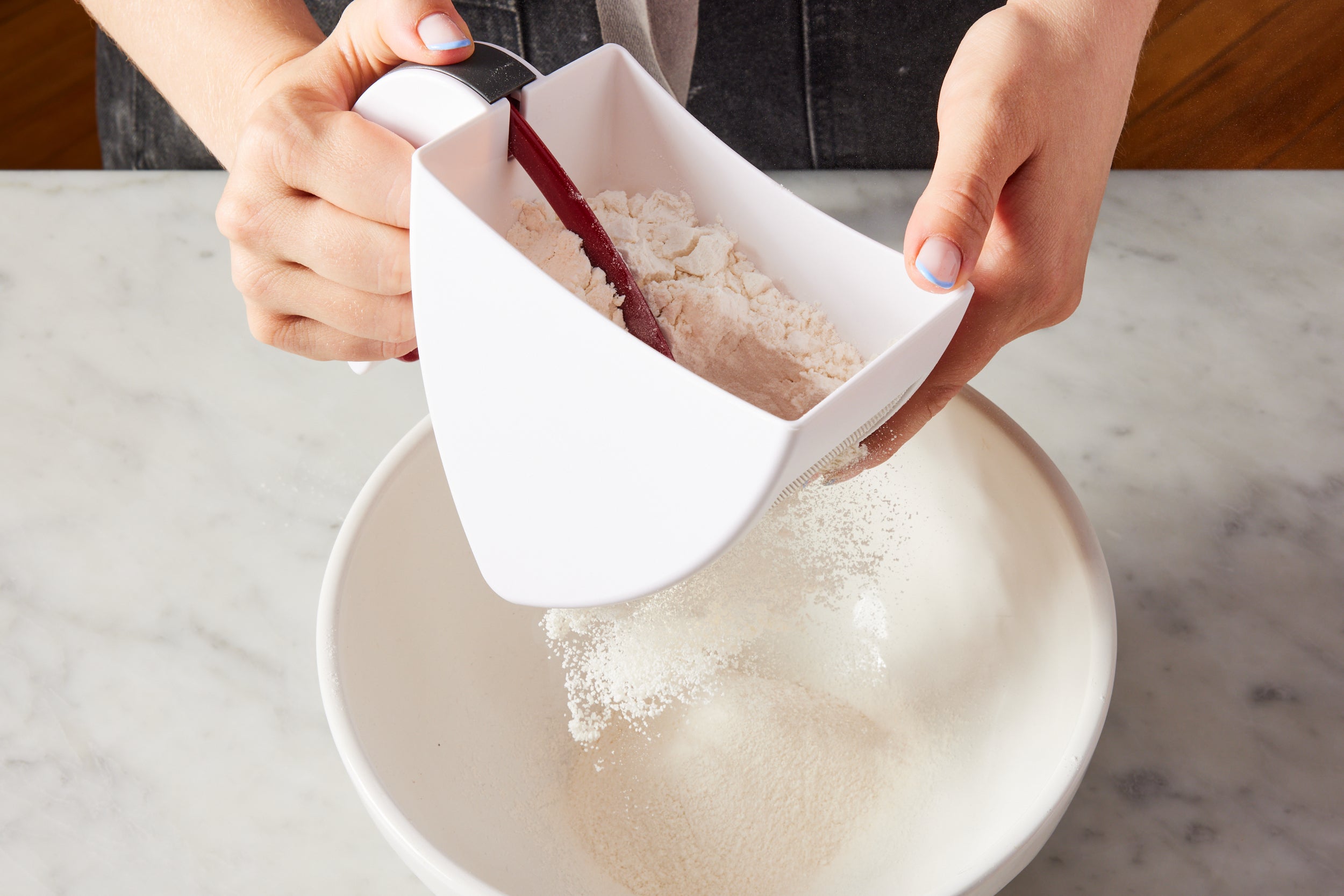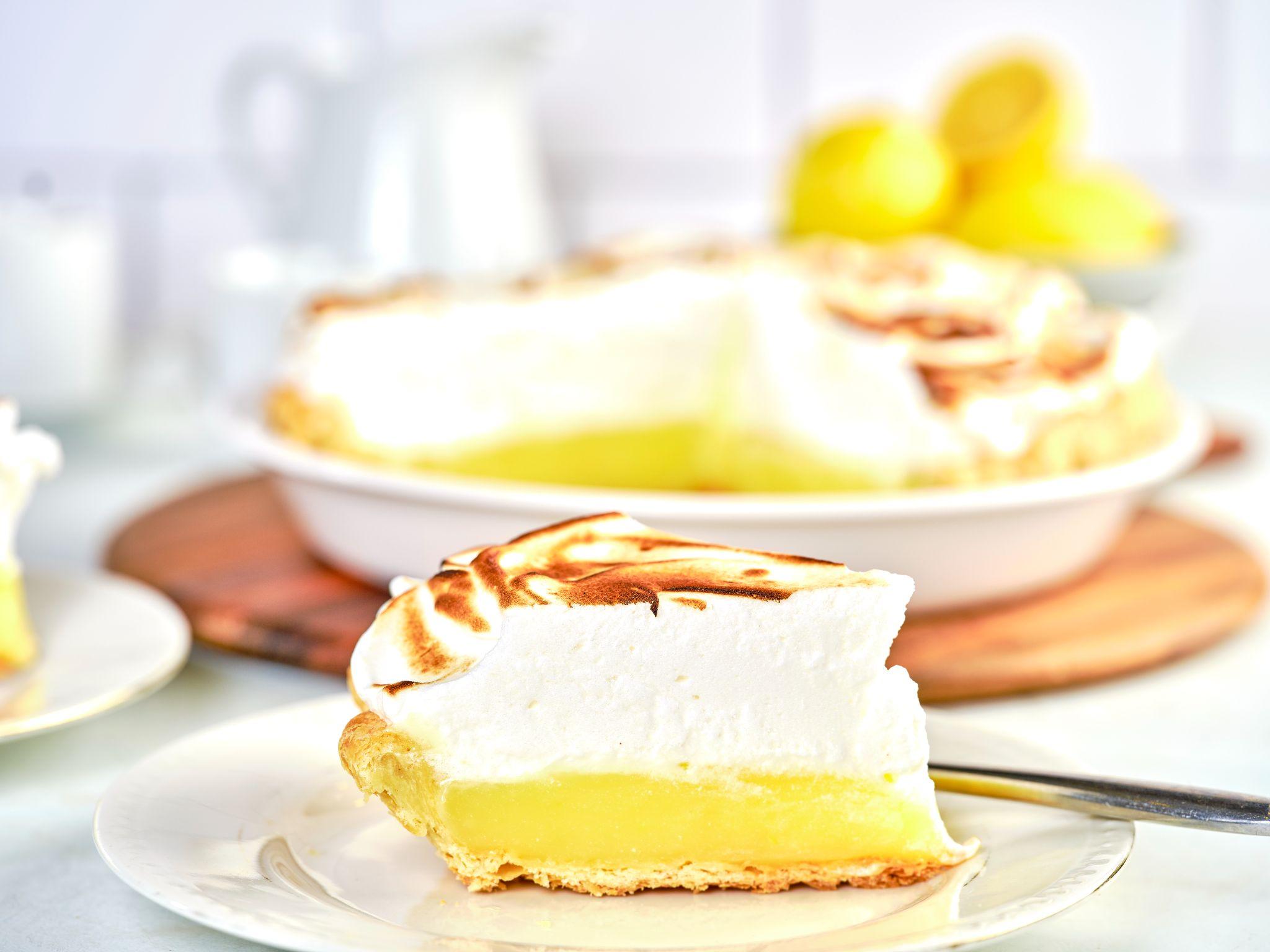Ever find yourself in the kitchen, ready to bake your favorite cake, only to pause and wonder: should you measure your flour before or after sifting? It’s a common conundrum that leaves even seasoned bakers scratching their heads.
This seemingly small decision can have a big impact on your baking results. By making the right choice, you could transform a dense loaf into a light, airy masterpiece. You’ll discover the secrets to perfect baking by understanding when and why to sift your flour.
So, if you want your baked goods to rise to the occasion every time, keep reading to uncover this essential baking tip!

Credit: www.tastingtable.com
Importance Of Measuring Flour
Have you ever found yourself puzzled in the kitchen, wondering whether you should measure flour before or after sifting? It’s a common dilemma among baking enthusiasts. Measuring flour accurately is crucial for the success of your baking endeavors. Getting it right can mean the difference between a cake that’s fluffy and moist or one that’s dense and dry.
So, why is measuring flour so important? Let’s dive into the details.
Impact On Baking Results
Your baking results heavily depend on how you measure flour. Precise measurements ensure your baked goods have the right texture and flavor. Too much flour can lead to a dry cake, while too little can make it collapse.
Consider the experience of making a batch of cookies. If you measure flour after sifting, you often end up with less flour in the cup than if you measure it beforehand. This small difference can affect the chewiness and spread of your cookies. Have you ever baked cookies that were too hard or didn’t spread enough? It might be due to inaccurate flour measurements.
Consistency In Recipes
Consistency is key in baking. You want your favorite recipes to turn out the same every time you make them. Accurate flour measurement helps maintain this consistency, ensuring each batch is as delightful as the last.
Imagine sharing a beloved family recipe with a friend, only for them to end up with a different result. It’s disappointing and can be easily avoided by sticking to precise flour measurements. Think of measuring flour as a way to honor the recipe and its creator.
Have you ever tried a new recipe and thought it was a disaster? It might not be the recipe itself but how the flour was measured. Accurate flour measurement can be the missing link to perfecting your baking adventures.
In your kitchen, do you measure flour before or after sifting? Whatever your preference, remember the importance of precision. It’s the foundation of successful baking and the secret to achieving delicious results every time.

Credit: www.kingarthurbaking.com
Differences Between Before And After Sifting
Measuring flour can be tricky. Should you sift first or later? This choice affects baking results. It changes the flour’s volume and texture. Learn how each method makes a difference.
Volume Variations
Sifting flour makes it lighter. Air gets trapped between particles. This increases its volume. Unsifted flour is denser. It packs tightly in measuring cups. You might use more flour than needed. This can change your recipe’s outcome.
Texture Changes
Sifting flour breaks up clumps. It creates a fine, smooth texture. This helps in mixing ingredients evenly. Unsifted flour might have lumps. These lumps can lead to uneven mixing. Your baked goods might not turn out as expected.
Benefits Of Measuring Before Sifting
Measuring flour before sifting can make a big difference. Bakers often debate whether to measure flour before or after sifting. Measuring before sifting offers several advantages. It ensures your recipes turn out just right.
Accuracy In Measurement
Measuring flour before sifting guarantees more precision. Sifting aerates the flour, making it lighter. This can lead to different amounts if measured after sifting. By measuring beforehand, you avoid this inconsistency. Your baked goods will have the correct flour amount every time.
Avoiding Overpacking
Flour can become compacted in the container. This can lead to overpacking if you measure after sifting. Measuring before sifting avoids this issue. You get an accurate measure without excess flour. This ensures your baked items are not heavy or dense.
Advantages Of Measuring After Sifting
Sifting flour before measuring ensures accuracy in baking. It eliminates clumps and adds air, giving better texture. This method often results in lighter, more consistent baked goods.
When baking, precision is key, and even a simple step like sifting flour can make a big difference. Many baking enthusiasts often wonder whether to measure flour before or after sifting. While both methods have their proponents, measuring flour after sifting has some distinct advantages. These benefits can elevate your baking from good to great. Let’s dive into why measuring after sifting might be the better choice for your next culinary masterpiece.Even Distribution
One of the primary advantages of measuring flour after sifting is achieving even distribution. When flour is sifted, it becomes lighter and more uniform. This ensures that when you measure it, you’re getting a consistent and accurate amount. Imagine baking a cake where each bite has the same perfect texture. Sifting breaks up any clumps and aerates the flour, making it easier to mix with other ingredients. Have you ever tried mixing flour and found stubborn lumps that refuse to blend? Sifting first can help prevent this, giving your batter a smooth start. This small step can be the difference between a dense, heavy cake and a light, fluffy delight.Reduced Clumping
Another benefit of measuring after sifting is reduced clumping. Clumps in flour can lead to uneven baking and inconsistent textures. Sifting helps break down these clumps, ensuring a smoother mix. If you’ve ever bitten into a muffin only to find a dry pocket of flour, you know how important this is. By sifting before you measure, you ensure that your flour is as free-flowing as possible. This not only makes mixing easier but also helps ingredients bind better. You’ll end up with a batter that’s more cohesive and bakes more evenly. Isn’t it amazing how such a small change can make such a big impact on your baking results? Next time you bake, try measuring after sifting and see if your baked goods don’t turn out just a bit better. What are your thoughts? Will you give it a try?Common Mistakes In Flour Measurement
Accurate flour measurement is crucial in baking. Many bakers make mistakes that affect recipes. Missteps can lead to dense cakes or crumbly cookies. Understanding common errors helps achieve perfect results. Let’s explore frequent flour measuring mistakes. Learn how to avoid them for better baking.
Overpacking Flour
Overpacking flour is a common mistake. This happens when flour is tightly packed into a cup. More flour than needed ends up in the recipe. Too much flour makes baked goods dry. Always use a spoon to fill the measuring cup. Level it off with a knife for accuracy. Avoid scooping directly from the bag. This technique prevents overpacking.
Ignoring Sifting Effects
Sifting flour changes its volume. Many ignore the effect sifting has on measurement. Sifted flour is lighter and less dense. Not accounting for sifting can alter recipes. Measure flour before sifting for consistency. If a recipe requires sifted flour, follow instructions carefully. Adjust measurements if necessary. Proper sifting ensures fluffy, tender results.

Credit: www.chsugar.com
Tips For Accurate Flour Measurement
Measuring flour accurately can be tricky. Sift flour before measuring for better results. This helps avoid excess flour and ensures your baking turns out great.
Accurate flour measurement is the cornerstone of successful baking. Have you ever wondered why your cake didn’t rise as expected or why your cookies turned out too dense? The culprit might be improper flour measurement. Understanding whether to measure before or after sifting can make all the difference. Here are some practical tips to help you measure flour accurately and achieve that perfect bake every time.Using The Right Tools
Investing in a good set of measuring cups is key. Use dry measuring cups for flour, as they allow for more precise measurements compared to liquid measuring cups. A kitchen scale is a baker’s best friend. Weighing your flour provides the most accuracy, eliminating any guesswork. Keep a flat-edged knife or spatula handy to level off the flour in your cup for a perfect measure.Proper Sifting Techniques
Sifting flour adds air, making it lighter and easier to mix. This can be crucial for delicate baked goods like sponge cakes. Always sift flour over a bowl to avoid spills and mess. This keeps your workspace tidy and your measurements accurate. If a recipe asks for “1 cup sifted flour,” measure after sifting. But if it calls for “1 cup flour, sifted,” measure before you sift. This small detail can make a big difference. Have you tried sifting with a fine mesh strainer instead of a traditional sifter? It works wonders and often provides a more even sift. By following these simple yet effective tips, you can ensure accurate flour measurements every time. Whether you’re a seasoned baker or just starting, mastering this skill will elevate your baking game. Are you ready to take your flour measurement to the next level?Frequently Asked Questions
Should You Sift Flour Before Measuring?
Sift flour before measuring for accurate results. Sifting removes lumps. It ensures a consistent texture in baking.
Does Sifting Flour Make A Difference?
Yes, sifting impacts the texture. It aerates flour, making baked goods lighter and fluffier. Essential for cakes.
How Do You Measure Sifted Flour?
Sift flour into a bowl. Use a spoon to fill a measuring cup lightly. Level with a knife for precision.
Can Sifting Flour Affect Baking Results?
Yes, sifting can change outcomes. It ensures even distribution, preventing dense or uneven baked goods. Important for recipes.
Why Is Sifting Flour Necessary?
Sifting is crucial. It removes clumps, mixes ingredients uniformly, and aids in precise measurement. Enhances baking quality.
Conclusion
Measuring flour accurately is key to perfect baking. Sifted flour weighs less. Measuring after sifting gives you a lighter result. Baking recipes can vary. Always check what the recipe suggests. Consistency is crucial for delicious treats. Using the right technique ensures better texture.
Try both methods and see the difference. Find what works best for you. Enjoy baking with precision. Happy baking!
